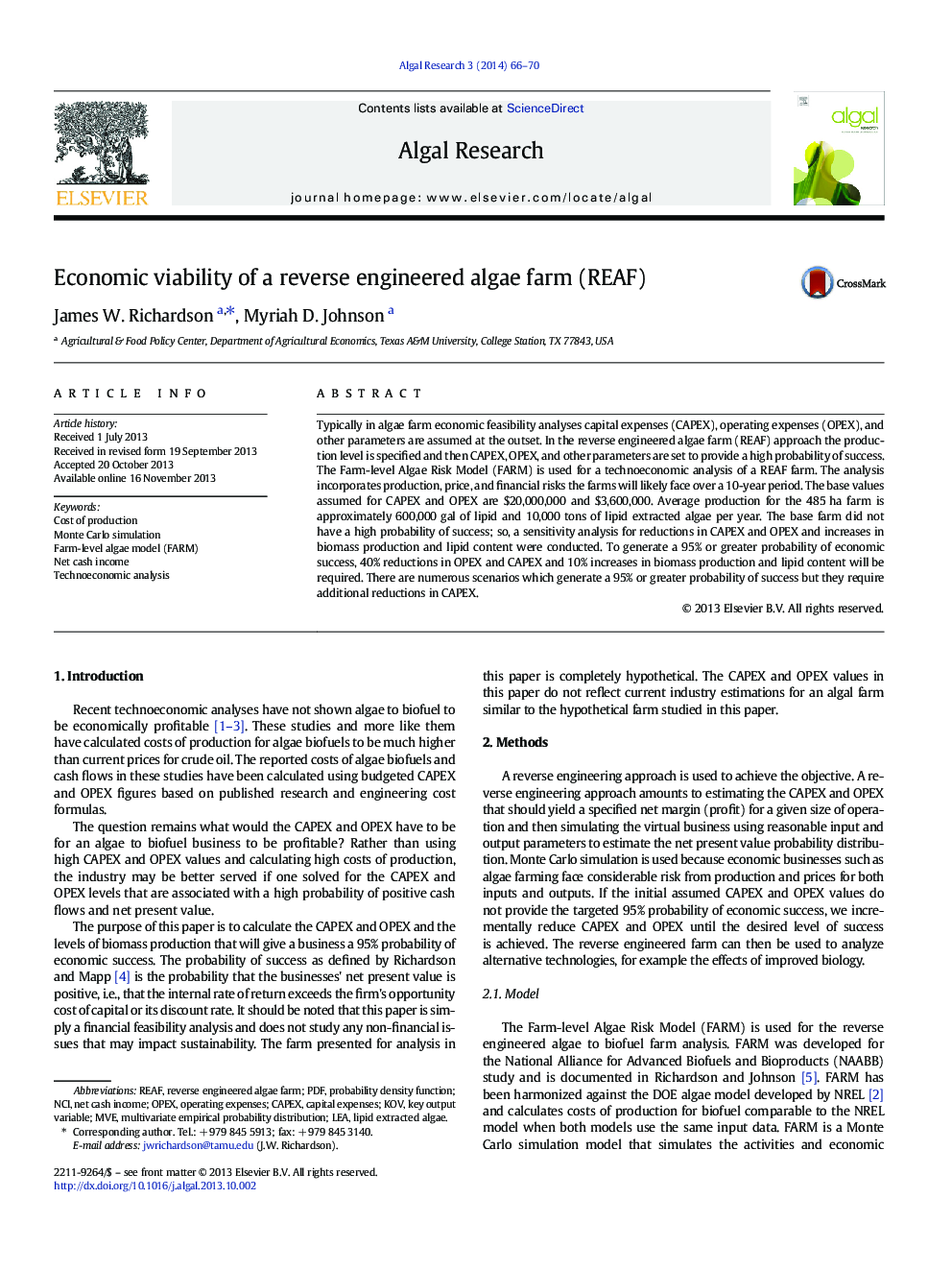| Article ID | Journal | Published Year | Pages | File Type |
|---|---|---|---|---|
| 1742140 | Algal Research | 2014 | 5 Pages |
•Parameters set to guarantee a high probability of success for a base farm.•Probability of economic success, cost of lipid produced are estimated for the farms.•Farm simulated for 10 years with probability distributions for production and price.•Sensitivity analysis conducted on reductions and increases in key parameters.•Many modified scenarios generate a 95% or greater probability of economic success.
Typically in algae farm economic feasibility analyses capital expenses (CAPEX), operating expenses (OPEX), and other parameters are assumed at the outset. In the reverse engineered algae farm (REAF) approach the production level is specified and then CAPEX, OPEX, and other parameters are set to provide a high probability of success. The Farm-level Algae Risk Model (FARM) is used for a technoeconomic analysis of a REAF farm. The analysis incorporates production, price, and financial risks the farms will likely face over a 10-year period. The base values assumed for CAPEX and OPEX are $20,000,000 and $3,600,000. Average production for the 485 ha farm is approximately 600,000 gal of lipid and 10,000 tons of lipid extracted algae per year. The base farm did not have a high probability of success; so, a sensitivity analysis for reductions in CAPEX and OPEX and increases in biomass production and lipid content were conducted. To generate a 95% or greater probability of economic success, 40% reductions in OPEX and CAPEX and 10% increases in biomass production and lipid content will be required. There are numerous scenarios which generate a 95% or greater probability of success but they require additional reductions in CAPEX.
